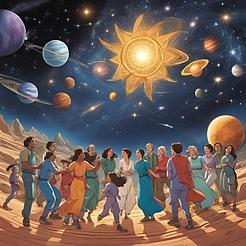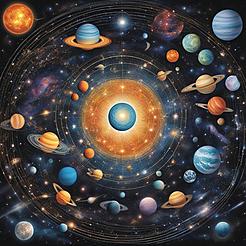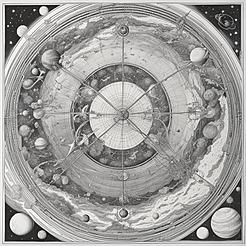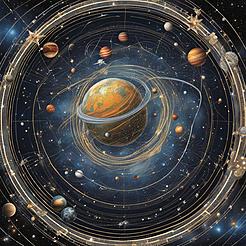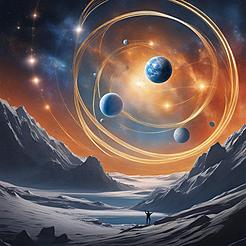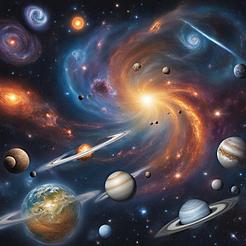 henrydjacob
henrydjacob- Chapter
- 2024-04-15

As we continue our exploration of the celestial mechanics that govern the intricate dance of celestial bodies, we now turn our attention to the fundamental forces that shape the motion of planets, stars, and galaxies throughout the cosmos. The gravitational forces at play in the vast expanse of space are not merely invisible threads connecting celestial bodies; they are the architects of the cosmic symphony that unfolds before our eyes.
At the heart of celestial dynamics lies the force of gravity, a universal phenomenon that binds the universe together in a delicate balance of attraction and motion. From the gentle pull of a planet on its moon to the mighty grip of a supermassive black hole at the center of a galaxy, gravitational forces dictate the paths of celestial bodies as they journey through the infinite reaches of space.
Imagine a planet orbiting a star, following an elliptical path that traces out its dance through the heavens. This elegant motion is not merely a product of inertia but a testament to the gravitational bond between the planet and its parent star. According to Kepler's laws of planetary motion, the shape and size of an orbit are determined by the gravitational force exerted by the central body, illustrating the profound influence of gravity on the celestial bodies that populate our universe.
Beyond the confines of individual planetary systems, gravitational forces extend their reach to shape the movements of entire galaxies. Picture a spiral galaxy, its graceful arms swirling in a cosmic ballet of stars and gas clouds. The gravitational pull between the stars and the dark matter that permeates the galaxy acts as a cosmic glue, holding the galactic ensemble together in a delicate equilibrium of forces.
In the realm of galactic dynamics, the interplay of gravitational forces gives rise to mesmerizing phenomena such as galactic collisions and mergers. When two galaxies come into close proximity, their gravitational attraction can lead to a cosmic tango of stars and gas, culminating in the spectacular fusion of galactic structures. These celestial encounters not only reshape the galaxies involved but also trigger the birth of new stars and the formation of exotic phenomena like supermassive black holes.
As we peer into the depths of space, we encounter the cosmic web – a vast network of galaxies interconnected by the invisible threads of gravity. The gravitational forces at play on these cosmic scales govern the large-scale structure of the universe, shaping the distribution of galaxies and clusters across the cosmic landscape. Through the lens of gravitational lensing, astronomers can even observe the bending of light by massive cosmic structures, offering a glimpse into the hidden gravitational forces that permeate the cosmos.
In the intricate tapestry of celestial dynamics, gravitational forces act as the silent maestros orchestrating the movements of celestial bodies with precision and elegance. From the delicate balance of a planet in orbit to the majestic sweep of a galaxy through space, gravity weaves a symphony of motion that captivates the imagination and inspires awe at the beauty of the universe's celestial choreography.
As we delve deeper into the mysteries of gravitational forces at play in the cosmos, we gain a deeper appreciation for the interconnectedness of celestial bodies and the universal influence of gravity on the fabric of space and time. Each celestial body, from the smallest asteroid to the largest galaxy, dances to the tune of gravity's embrace, creating a harmonious ensemble that testifies to the enduring power of the forces that shape our universe.
References:
- "Introduction to Celestial Mechanics" by Martina W. Beccari
- "Gravitation" by Charles W. Misner, Kip S. Thorne, and John Archibald Wheeler
- "Galactic Dynamics" by James Binney and Scott Tremaine
